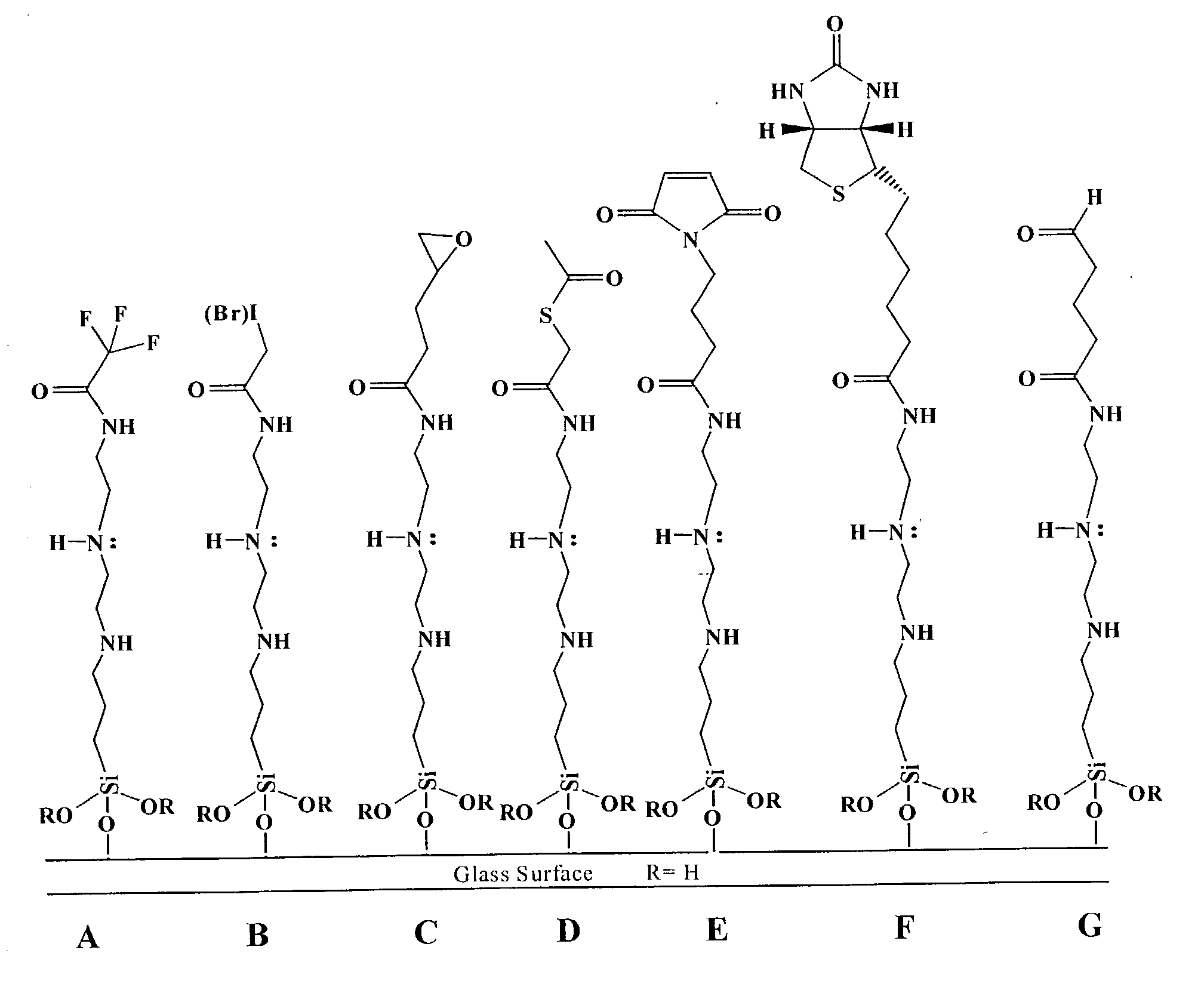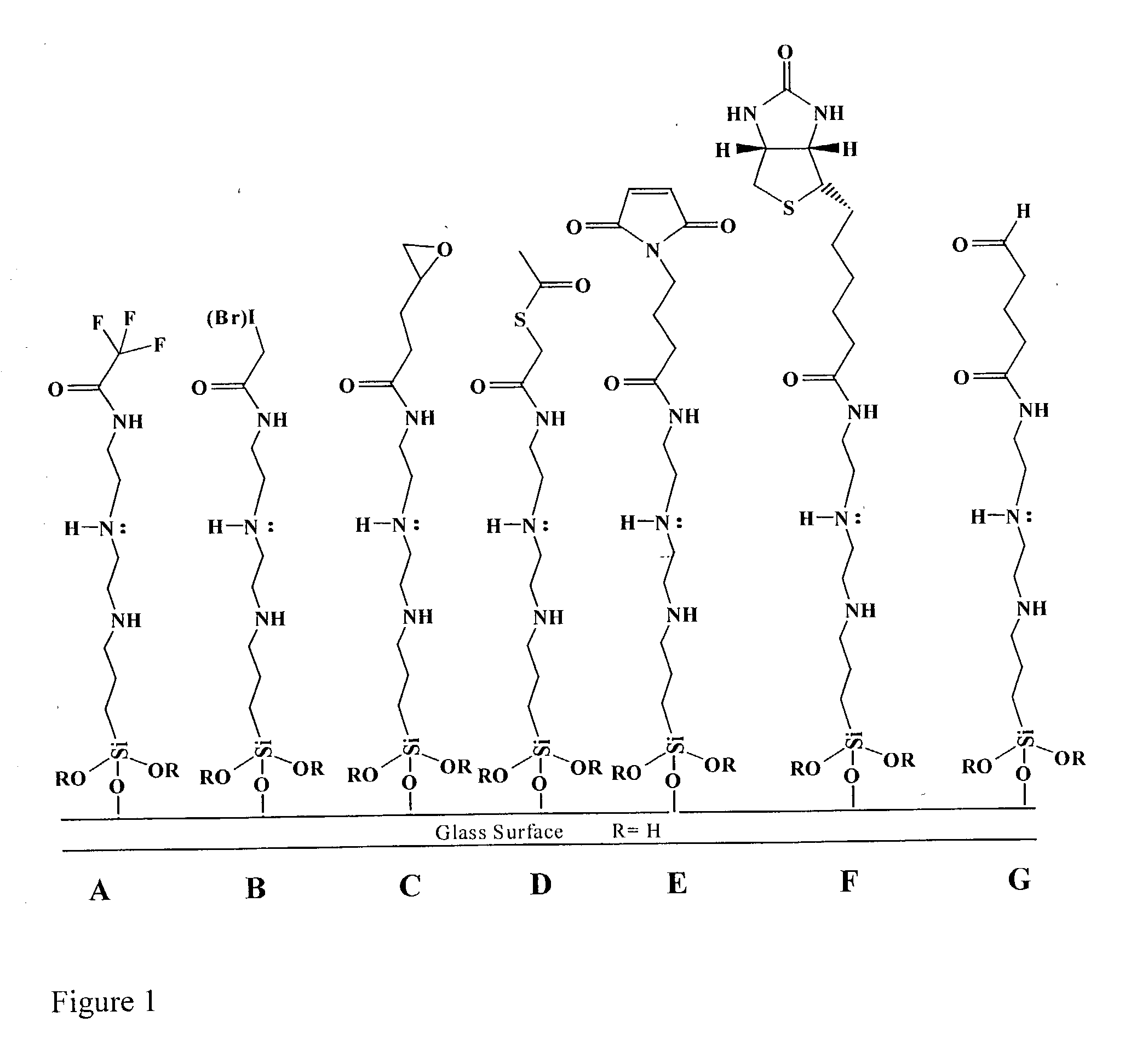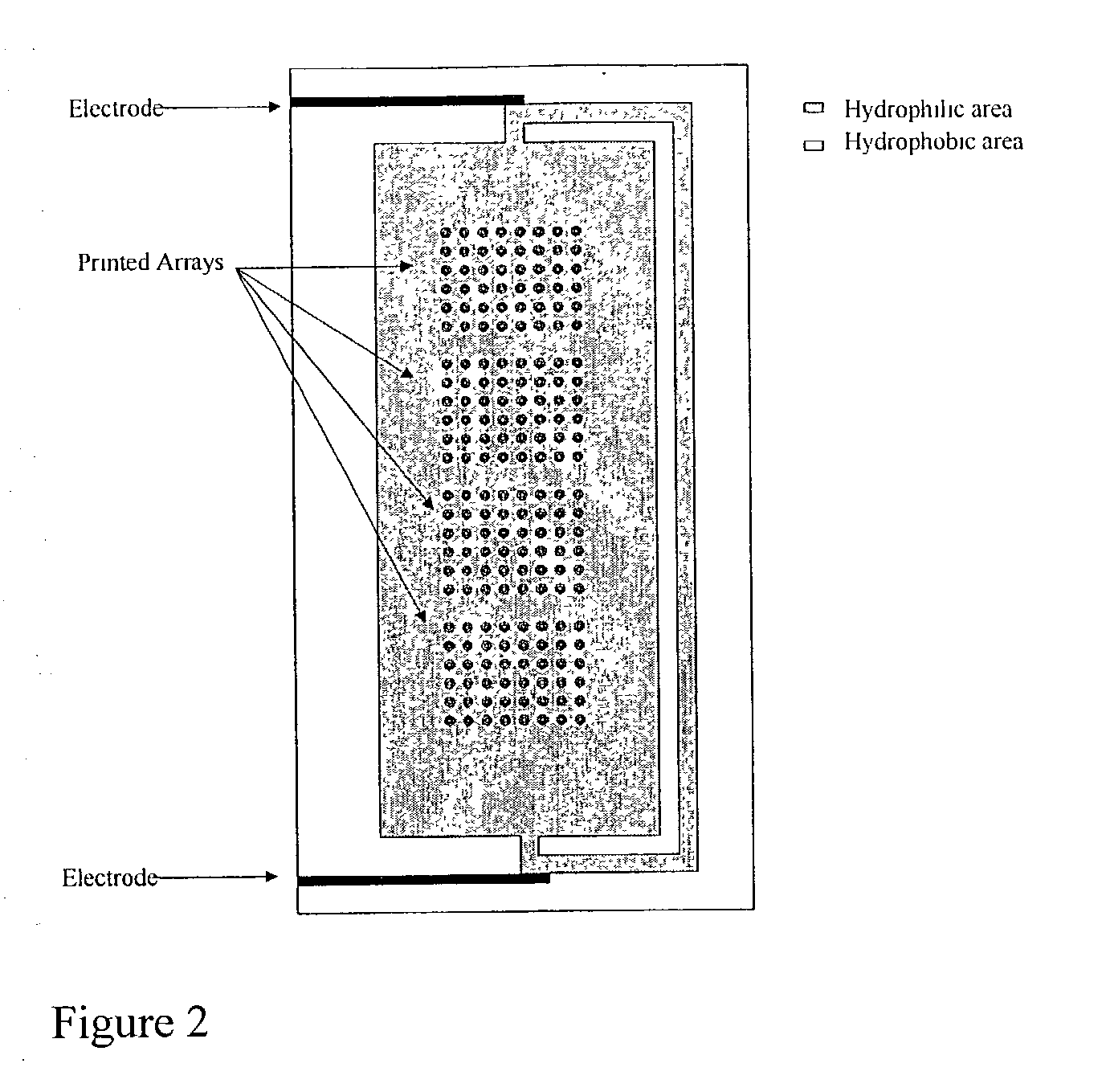Supports treated with triamine for immobilizing biomolecules
- Summary
- Abstract
- Description
- Claims
- Application Information
AI Technical Summary
Benefits of technology
Problems solved by technology
Method used
Image
Examples
example 1
[0047] Triamine Coated Slides Printed with DNA
[0048] Surfaces were deposited on glass slides as described above, printed with labeled DNA, scanned, treated (depending on the nature of the ink used), boiled in water for 2 minutes and re-scanned. A successful surface candidate had a high retention of DNA as determined by the ratio of the fluorescence signal before and after boiling. Visual inspection of slides determined that triamine coated slides provided a surface with printed spots- that did not give "comets" and there is little to no background interference. The triamine surface binds DNA very well and is a very good surface for DNA (or biomolecular) immobilization.
example 2
[0049] Surface Analysis
[0050] The DNA experiments showed the triamine-modified substrate surface to be a strong candidate as suitable surface for DNA arrays. It had been shown in previous experiments that the GAPS slides had white globules (oligomers of GAPS) randomly distributed on the surface that could be washed off in water. In the absence of the washing, however, the globules remained give a less than smooth surface texture. AFM analysis for both triamine and a GAPS coated surfaces determined that the triamine surface has a much smoother appearance and an obvious absence of white globules clearly seen on the GAPS slide. The white globules on the GAPS image have been shown by further analysis to be oligomers of the GAPS monomer. The surface analysis of the triamine has shown it to be an extremely-smooth surface as judged by AFM. The use of an ellipsometric method utilizing a silicon substrate gave good numbers indicating that a good monolayer is being deposited. The monolayer de...
example 3
[0051] Comparison of Triamine Slides with GAPS Slides
[0052] The next step in the evaluation of the triamine surface as a surface for HDA applications was to do a side-by-side comparison to the GAPS surface. Corning GAPS slides were obtained and triamine slides were prepared. The standard printing and hybridization protocols were followed and these are outlined in detail in the methods section above. Each surface chemistry was done in triplicate for the purpose of generating statistically significant data. A total of 6 six slides (3 triamine and 3 CMT GAPS) were run together. Visual inspection of the slides showed that the signal from the triamine slides is significantly greater than that of the signal from the GAPS slides. The spot morphology and overall background of the triamine slides were very good. The target DNA (printed) and the probe DNA (hybridization solution) were labeled in order to evaluate the surface performance. The target DNA provides for a measure of the retention ...
PUM
| Property | Measurement | Unit |
|---|---|---|
| Water contact angle | aaaaa | aaaaa |
| Water contact angle | aaaaa | aaaaa |
| Flow rate | aaaaa | aaaaa |
Abstract
Description
Claims
Application Information
 Login to View More
Login to View More - R&D
- Intellectual Property
- Life Sciences
- Materials
- Tech Scout
- Unparalleled Data Quality
- Higher Quality Content
- 60% Fewer Hallucinations
Browse by: Latest US Patents, China's latest patents, Technical Efficacy Thesaurus, Application Domain, Technology Topic, Popular Technical Reports.
© 2025 PatSnap. All rights reserved.Legal|Privacy policy|Modern Slavery Act Transparency Statement|Sitemap|About US| Contact US: help@patsnap.com



